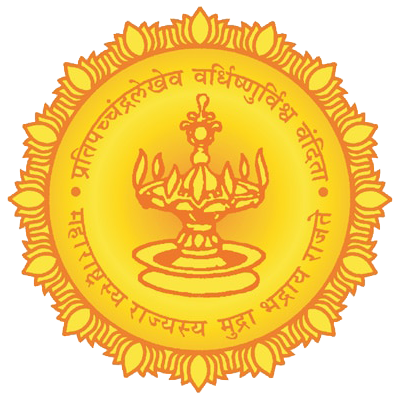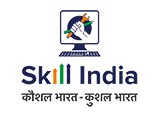Craftsman Training Scheme
Scheme Objective
The Craftsman Training Scheme was introduced by government of India in 1950 to ensure a steady flow of skill workers in different trades for the domestic Industries, to raise quantitative Industrial Production by systematic training , to reduce unemployment among the educated youth by providing them employable training , to cultivate and nurture a technical and industrial attitude in the minds of younger generation. The scheme, most important in the field of vocational training , has been shaping Craftsmen to meet the existing as well as future manpower need, through the vast network of ITIs in the state. The day-to-day administration of ITI under the Craftsman Training Scheme was transferred to State Government with effect from the year 1956.The actual implementation of this scheme was initially done by the central government. However, since 1969, this scheme has been implemented by the state government. Also, the expenditure on government industrial training institutes is being done by the state government.
Scheme Objective
Scheme Main Objective
- To ensure a steady flow of skilled workers in different trades for the industry.
- To increase the standard, quality and production of industrial establishments by providing systematic training to the workers.
- To raise the quality & quantity of industrial production by systematic training of workers.
- To reduce unemployment among the educated youth by equipping them for suitable industrial employment.
Status of Craftsman Training Scheme in Maharashtra
A total of 85 Trades are given training in government and non-government education and training institutes as follows.
| Engineering Trade | Total | Non Engineering Trade | Total | All Total | ||
| 01 Year | 02 Year | 01 Year | 02 Year | |||
| 17 | 37 | 54 | 30 | 01 | 31 | 85 |
The training skills of these courses are given as per the syllabus prescribed by the Ministry of Skill Development & Entrepreneurship, Government of India, New Delhi.
On successful completion of training the National Council of Vocational Training(NCVT) Certificate is issued by the Directorate General of Training, New Delhi. This certificate is internationally recognized.
Present Status of the No. Of Institutes & Available Seats (August 2024)
| Type Of Institute | No. of Institutes | Available Seats | ||
|---|---|---|---|---|
| Government | Private | Government | Private | |
| General | 307 | 585 | 74724 | 58088 |
| Tribal | 61 | 0 | 12324 | 0 |
| Women | 15 | 0 | 3776 | 251 |
| Tribal Ashram ITI | 28 | 0 | 1412 | 0 |
| SCP ITI | 4 | 0 | 616 | 0 |
| Minority | 2 | 0/std] [std]416 | 0 | |
| Defense | 2 | 0 | 248 | 0 |
| TOTAL | 419 | 585 | 93516 | 58088 |
| 1004 | 151604 | |||
For maximum utilization of available basic facilities & to increase number of skilled manpower in it is, training is given in 3 shifts in ITIs which are in Corporation area. In 234 & 142 Government ITIs, training is given in 2 shifts & 1 shift respectively.
Government ITI Directory 2024-2025
Private ITI Directory 2024-2025
Tradewise List of Government ITI 2024-2025
Tradewise List of Private ITI 2024-2025
Priority For Women Education
To promote women for Vocational Education, 15 ITIs are started for women only. more over, in the ITIs which have been started w.e.f. 1990 with 6 & 8 trades, in which 2 trades are reserved for women and ITIs with 4 trades are having 1 trade for women. In addition to this, there are 30% seats are reserved for women in General ITI’s.
Addmission To ITI
Online Admission Process is implemented in Maharashtra from Year 2013. Please visit http://admission.dvet.gov.in for further details.
Training Fee/Deposit/Concession
| S.No | Details | Government ITIs | Private ITIs | ||||||
|---|---|---|---|---|---|---|---|---|---|
| General Category | Reserved Category | IMC Seats | OMS | NRI | MS | OMS | NRI | ||
| Annual Training Fee | |||||||||
| 1 | Machine Group – Engineering Trades | 1200 | – | 30000 | 45000 | 60000 | Pls. visite http://admission.dvet.gov.in/ | ||
| Non Machine Group – Engineering Trades | 1000 | – | 25000 | 37500 | 50000 | ||||
| Non Engineering Trades | 800 | – | 20000 | 20000 | 40000 | ||||
| 2 | Fees For Identity Card | 50 | 50 | 50 | 50 | 50 | |||
| 3 | Fees For Library | 100 | 100 | 100 | 100 | 100 | |||
| 4 | Fees For Internet Facility | 100 | 100 | 100 | 100 | 100 | |||
| 5 | Fees For Cultural Activities | 100 | 100 | 100 | 100 | 100 | |||
| 6 | Fees For Hostel | 1200 | 1200 | 1200 | 1200 | 1200 | |||
| Advanced payment to be done at the time of Admission | |||||||||
| 7 | Training Deposit | 500 | 500 | 500 | 500 | 500 | 500 | 500 | 500 |
| 8 | Library Deposit | 100 | 100 | 100 | 100 | 100 | 100 | 100 | 100 |
| 9 | Hostel Deposit | 1000 | 1000 | 1000 | 1000 | 1000 | 1000 | 1000 | 1000 |
Age Limit
The Candidates seeking admission to ITI should have completed 14 years of age. There is no maximum age limit for admission.
Subsistence Allowance/Stipend
Admitted to courses under Craftsman Training Scheme in Government Industrial Training Institutes, apprentices from all categories i.e. Scheduled Castes, Scheduled Tribes, Scheduled Castes and Nomadic Tribes, Other Backward Classes, Special Backward Classes Minority Communities and Open Category Economically Backward Sections trainees whose annual income is Rs. 8.00 lakhs, all such trainees have been approved to pay tuition fee at the rate of Rs.500/- per month from the academic year 2023
Scholarship
Post Matric Scholarship is applicable to Scheduled Caste & Minority trainees.
Examination
The Director of Vocational Education and Training conducts the All India Trade Test and awards Provisional certificates to the successful candidates. The Final Certificates are awarded by the Directorate General of Training, New Delhi.
Opportunities For ITI Pass-Outs
- During ITI training the trainees acquire practical skills of the trades and they are capable of doing production jobs under the supervision of skilled worker. At this stage they are categorised as semi-skilled worker.
- Under Apprentice Act-1961, the ITI pass-outs can be engaged in the relevant designated trade by the industry having adequate training facilities. The candidates so engaged will learn the productive / marketable skills and become suitable for employment.
- After passing the NCVT examination if the candidate, instead of taking job with industry, he is willing to start small business, he can do so with the assistance of government agencies promoting such activity and providing necessary assistance.
NCVT MIS
Raw Materials Required for Practical







